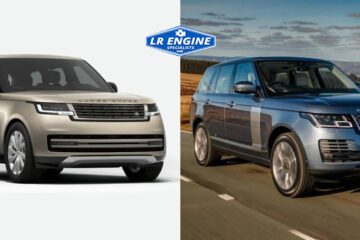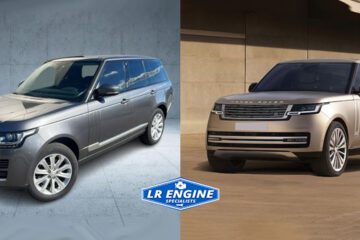Introduction:
Designed for those who demand more, Range Rover is the pinnacle of modern motoring. Over the years, these vehicles have undergone not only design transformations but also improvements in engine performance and efficiency. A compelling comparison exists between two modern engineering marvels, the Range Rover Velar and the Range Rover Sport. These two models demonstrate how Land Rover has navigated the shifting demands for petrol and diesel powertrains, efficiency, and an exciting driving experience. The Velar and Sport aren’t just vehicles; they are statements of how power, efficiency, and luxury can coexist seamlessly.
The Engine Evolution Journey
Range Rover was initially designed as a utilitarian off-roader. But as consumer expectations rose, so did the need for a powertrain transformation. Today’s buyers demand more than just off-road strength; they want performance, refinement, fuel economy, and emissions compliance. The latest Range Rover Velar and Sport models epitomise this shift more than any other.
Both models have matured with an emphasis on petrol and diesel variants that embrace turbocharging, mild-hybrid systems, and effortless automatic transmissions. The evolution from typical V8S to downsized turbocharged engines is a reflection of changing industry standards and consumer demands.
The Range Rover Velar: Sleek Design Meets Engine Efficiency
The Range Rover Velar is a relatively new name in the Range Rover range. Built to fill the space between the Evoque and Range Rover Sport, it shows clean, understated styling and sharp driving dynamics. But underneath the surface lies a well-tuned range of petrol and diesel engines engineered for excellent performance.
The Velar’s diesel options contain the D200 and D300, both 2.0L and 3.0L variants, respectively, offering efficient torque delivery. These engines have mild-hybrid technology to reduce lag and enhance start-stop responsiveness. On the petrol side, options such as the P250 and P400 bring turbocharged power with varying levels of horsepower. The P400, especially, is a 3.0L inline-six with 48V mild-hybrid assistance, delivering both power and smoothness.
In the Range Rover Velar engine vs Range Rover Sport engine analysis, the Velar holds its ground with advanced but capable engines, designed more for everyday luxury and comfortable highway performance.
The Range Rover Sport: Muscle Meets Modern Engineering
While the main process is similar, reconditioning petrol and diesel engines involves unique technical nuances.
Petrol engines depend on spark ignition. RIn comparison, the Range Rover Sport has always had a striking personality. As its name implies, it’s designed for drivers who want more benefit, more punch, and an energetic profile that toes the line between luxury SUV and performance car.
The diesel models of the Sport include the D250 and D300, offering powerful low-end torque and smooth cruising ability. These engines are larger, generally 3.0L inline-sixes with mild-hybrid technology, guaranteeing the power delivery remains fluid and efficient.
For the petrol variants, the P360 and P400 dominate the landscape. While similar in displacement to the Velar’s P400, the tuning and spirited feel more athletic in the Sport. Drivers notice the instant throttle response, better acceleration times, and improved towing capacities.
When comparing the Range Rover Velar engine vs the Range Rover Sport engine, the Sport focuses on performance tuning and mechanical robustness, while still balancing fuel economy and emission-conscious design.
Shared Technologies: Where Velar and Sport Converge
Despite their differences, the Velar and Sport share various technological similarities under the hood. Both use the Ingenium engine architecture, developed in-house by Jaguar Land Rover. These modular engines are built to be lightweight, efficient, and capable of being fitted with hybrid support systems. This supports consistency in parts, servicing, and future electrification compatibility.
Both versions now use eight-speed automatic gearboxes and smart all-wheel-drive systems. They also offer multiple drive modes, including Eco, Comfort, Dynamic, and Terrain Response settings, giving both petrol and diesel models an adaptive edge.
These shared traits improve the driving refinement across the Range Rover range, but tuning and power delivery still give each model its unique feel.
Efficiency and Emissions: Diesel Still Holds Ground
As environmental policies become stricter, diesel engines are experiencing growing regulatory pressure. Range Rover has made notable investments to confirm its diesel models meet stringent emissions standards while maintaining performance. The Velar and Sport both offer EU6-compliant diesel engines with AdBlue systems, particulate filters, and mild-hybrid tech to meet standards without sacrificing power.
The Velar’s diesel engines value low-end efficiency and comfortable city performance, while the Sport’s diesel variants deliver greater torque for excellent towing and off-road capability.
Comparing the Range Rover Velar engine vs the Range Rover Sport engine in diesel trims reveals the main differences in capability and refinement.
Performance Numbers: Beyond Horsepower
While horsepower is a go-to metric, advanced Range Rover engines offer more refined performance dynamics. The Velar’s petrol P400 generates around 395 horsepower, but it’s tuned for effortless acceleration, reduced turbo lag, and luxury-oriented silence. It accelerates well with a refined composure.
Meanwhile, the Sport’s P400 feels livelier. Even with similar output numbers, its throttle mapping, gearbox response, and suspension tuning are emphasised on a more engaging drive. It’s the kind of SUV that feels more car-like when pushed on winding roads.
So while analysing the Range Rover Velar engine vs the Range Rover Sport engine, it becomes clear that performance is about tuning, not just figures. The Sport leans into its name with gusto, while the Velar keeps things composed.
Ownership Costs and Maintenance Differences
Engine evolution is more than performance, it’s about cost of ownership, durability, and maintenance. Both variants benefit from Jaguar Land Rover’s continuous enhancements in engine design, reducing known issues such as timing chain noise and EGR faults.
The engineering load on Sport engines is normally higher due to their usage profile, necessitating more continuous service intervals compared to the Velar. Diesel variants, especially in the Sport, need more attention to fuel quality and AdBlue top-ups.
Velar engines, being lighter-duty and more emphasized on efficiency, tend to have lower overall running costs, especially the 2.0L diesel and petrol models.
Still, both benefit from scheduled servicing and using certified specialists to keep engine performance at its peak. This becomes necessary as vehicles age, particularly given the complex systems involved in modern mild-hybrid Range Rover engines.
Driving Experience: Engine Behaviour in Real-World Scenarios
In the Range Rover Velar engine vs Range Rover Sport engine comparison, on-road performance shows the most significant differences.
The Velar is exemplary for drivers who value ride comfort, quietness, and daily drivability. Its engines, particularly the P250 and D200, are smooth, predictable, and efficient. The P400 adds punch but keeps its elegance.
In comparison, the Sport feels more alive. Even in diesel form, the D300 engine provides brisk acceleration, ideal overtaking power, and high-speed stability. The petrol P400 adds even more exhilaration, making it a real performance SUV.
If the Velar is about elegance and poise, the Sport is about command and control.
Engine Sound and Character
It’s more than how the engine performs, it’s also about how it sounds. The Velar, again, is subdued. Even the robust P400 emits a refined growl but remains quiet in the cabin.
The Sport, however, has a more auditory personality. Engine tuning and exhaust design guarantee that petrol models, particularly, have a deep, satisfying tone under acceleration. It’s subtle but rewarding, and for enthusiasts, a clear differentiator.
This adds another point to the Range Rover Velar engine vs Range Rover Sport engine conversation, one rooted in emotional engagement and sensory feedback.
Future-Ready Powertrains: Transitioning to Electrification
As the automotive world shifts toward electrification, both Velar and Sport engines have transformed to accommodate future tech. Using mild-hybrid systems now helps ease the transition to fully plug-in and battery electric vehicles.
Already, both vehicles are available with PHEV models, but within the petrol and diesel segment, the adoption of 48V systems is notable. These systems support start-stop efficiency, low-speed electric assist, and better fuel economy, without compromising on power.
This forward-thinking engineering means that even typical engines are designed with electrification in mind, guaranteeing longevity in a fast-changing market.
Which One Should You Choose?
Selecting between the Range Rover Velar engine and vs Range Rover Sport engine depends largely on what you prioritise.
Opt for the Velar if you want ideal luxury, fuel efficiency, and a vehicle that shines in urban and highway environments. Its engines are effortless, quieter, and tuned for relaxed performance.
Select the Sport if you want dynamic driving, powerful towing capability, and engines that are more responsive and engaging. Its powertrains are more robust, giving you confidence in diverse terrains and conditions.
Final Thoughts
At its core, the Range Rover Velar engine vs Range Rover Sport engine comparison reflects Land Rover’s balance between innovation and heritage. Land Rover has managed to build two distinct driving experiences within the same powertrain family, one geared toward advancement and elegance, the other toward power and presence.
This evolution in engine technology guarantees that whatever your preference, diesel or petrol, subtle or spirited, you’ll find a choice that fits your lifestyle.
For those looking to service or improve their Range Rover petrol or diesel engine, trust professionals who understand the intricacies of these sophisticated machines. LR Engine Specialists offer matchless insight, diagnostic skill, and tuning capabilities to keep your engine performing like new.
FAQs:
Which Range Rover has better fuel economy: Velar or Sport?
The Velar normally offers better fuel economy due to its lighter design and smaller engine options. It’s more efficient for daily city and highway driving.
Are Velar and Sport engines the same?
They share the same Ingenium engine architecture, but tuning differs. The Sport is aligned for higher performance and responsiveness.
Is the P400 engine better in the Velar or the Sport?
The P400 in the Sport feels more potent and dynamic. In the Velar, it’s tuned for smoother, more advanced performance.
Which model is better for towing: Velar or Sport?
The Range Rover Sport is appropriate for towing, offering more torque and higher towing capacities. It’s designed for heavier-duty use.
Do both models support hybrid technology?
Yes, both offer mild-hybrid systems and plug-in hybrid variants. These boost efficiency and future-proof the vehicles for electrification.


